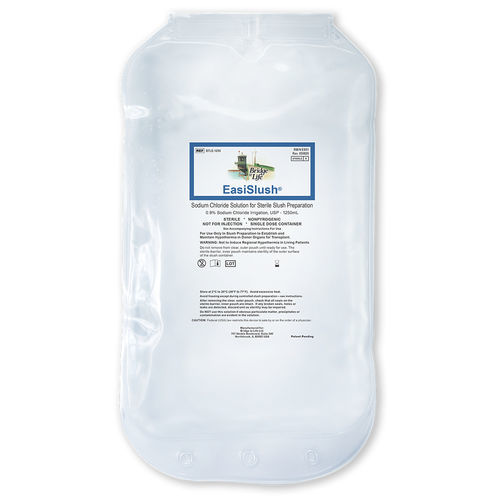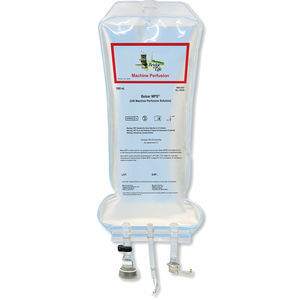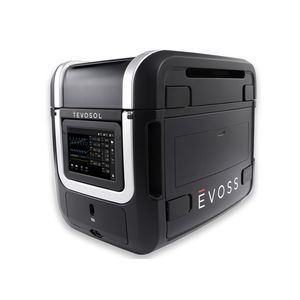
Saline solution infusion bag EasiSlush®
Add to favorites
Compare this product
fo_shop_gate_exact_title
Characteristics
- Application
- saline solution
- Capacity
0.3 l
(0.1 gal)
Description
Now featuring a durable triple-bag package where you can easily break-up ice. Available in the U.S.
Strike the frozen bag with a mallet
Refreeze the solution
Store frozen up to 3 months – ready when you are
Bag optimized for elasticity and 3X durability at low temperatures
Reduce breakage and scrap: save money, save time
Description
EasiSlush® is sterile, non-pyrogenic, isotonic and is contained in a sterile, flexible, non-PVC bag with approximate calculations as follows:
Osmolarity of 308 mOsm
Sodium concentration of 154 mEq/L
Chloride concentration of 154 mEq/L
pH of 5.2 at 20°C
A sterile-barrier, inner pouch maintains sterility of the EasiSlush® bag.
The sterile-barrier pouch consists of a clear front and a Tyvek® back. Pouch design includes a peelable seal with a chevron to facilitate opening.
A clear, outer pouch maintains cleanliness of the sterile-barrier pouch.
Storage
It is recommended that this product be stored unfrozen at 2°C–25°C (36°F–77°F). Avoid excessive heat. Brief exposure, up to 40°C, does not adversely affect this product.
EasiSlush® may also be kept frozen at temperatures between -30°C to -4°C (-22°F to 25°F) for up to 3 months.
Usage
EasiSlush® slushed solution is intended for topical cooling of in-situ, abdominal donor organs during intraoperative recovery from the donor. It is also intended to maintain organ hypothermia during storage and transport to the transplant recipient.
EasiSlush® slushed solution is used to establish, and maintain hypothermia of donor organs during recovery, storage, and transport.
Catalogs
No catalogs are available for this product.
See all of Bridge to Life‘s catalogsRelated Searches
*Prices are pre-tax. They exclude delivery charges and customs duties and do not include additional charges for installation or activation options. Prices are indicative only and may vary by country, with changes to the cost of raw materials and exchange rates.







